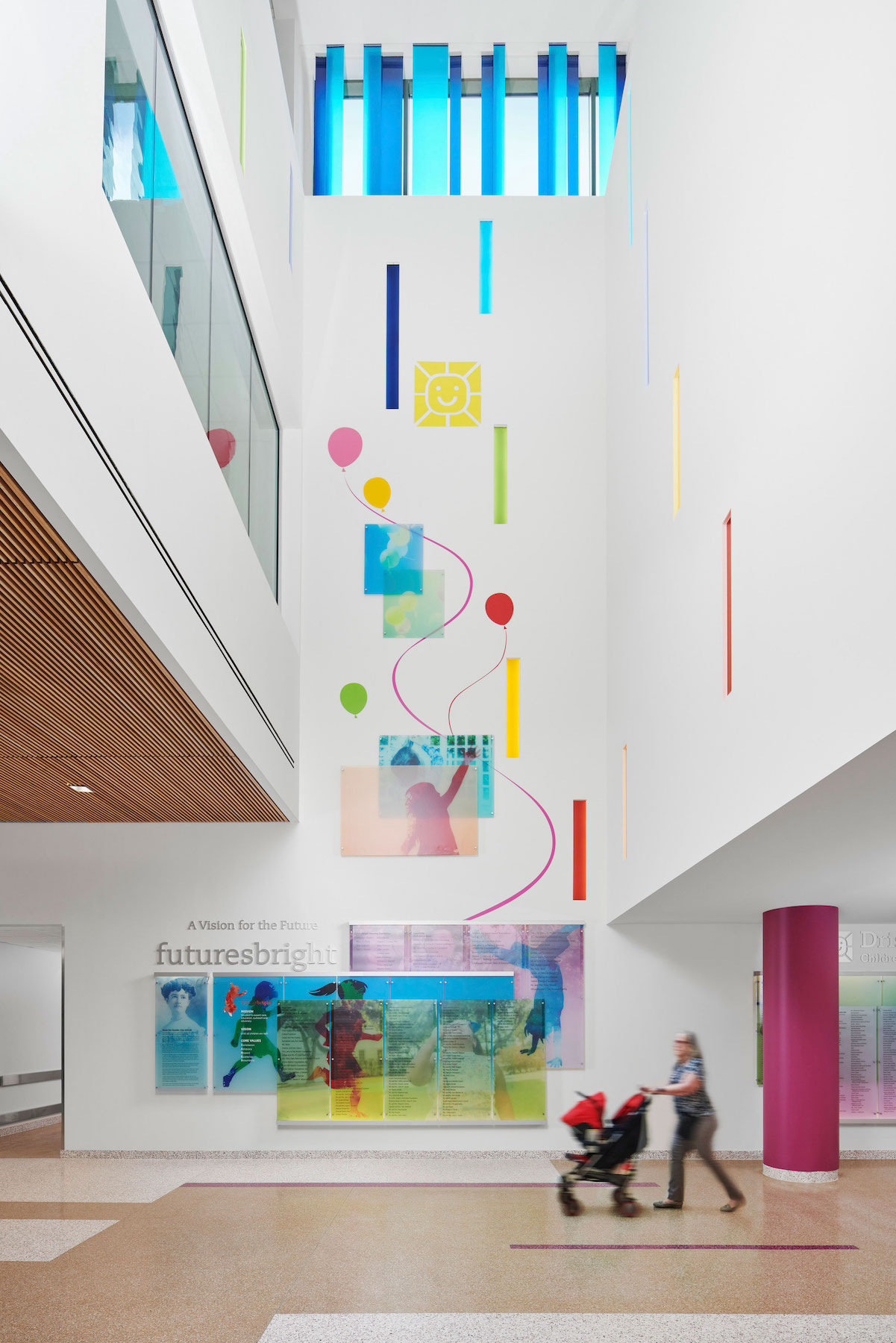Page and EYP announced that they have successfully closed a transaction that integrates the two design firms. Guided by similar values and culture, they will expand their services and geographic reach, working seamlessly across offices and disciplines. Together as one firm they will combine exceptional design rooted in architectural, engineering and consulting capabilities to make lives better.
“Bringing together our two firms allows us to work on increasingly complex projects that benefit from our expertise across disciplines and market sectors,” stated Thomas McCarthy, Page Chief Executive Officer. “Together, we’re bringing the most compelling, innovative designs and expertise to each project we pursue regardless of scope or location, and we’ll be able to invest in research and thought leadership to co-create with our clients.”
With a diverse, international portfolio—encompassing the academic; aviation; civic, community and culture; corporate and commercial; government; healthcare; housing and hospitality; industrial; life sciences; and science and technology sectors—the integrated firm of designers, architects and engineers will deliver high-performance designs that help clients measure, reduce, and offset carbon emissions. In addition, the firm will continue to promote equity and wellness with teams versed in practices like universal design, Design for Freedom, Well, Fitwel, and other strategies contributing to diversity and inclusion.
“Page and EYP both create designs that enhance people’s lives and communities,” stated Kef Mason, who served as interim chief executive officer at EYP, and has agreed to stay on with Page. “Combining our expertise is a winning formula for our clients and our employees. It offers us the ability to provide growth, mentorship, and training for our employees that translates to cutting-edge design in our projects. This agreement supports the natural growth trajectories and strategic vision for both firms by unifying our efforts to benefit our clients and staff.”
A spokesperson for Page says that EYP will operate as Page, but that the company is also exploring branding options that capitalize on the strengths of both firms.
In an unanimous decision by Page’s Board, Page submitted a successful bid for EYP’s assets on June 22. The combined firm will have more than 1,300 employees across the U.S., Latin America, and the Middle East.
BOTH FIRMS STRONG IN HEALTHCARE SECTOR

In April, EYP, with $149 million in liabilities, sought Chapter 11 bankruptcy protection from its creditors. The Albany, N.Y.-based firm reportedly had a $67.7 million “stalking horse” bid for its assets from the private equity firm Ault Alliance, according to Reuters and the Albany Times Union.
Last year, EYP, which was founded in 1972, generated $126.5 million in revenue, nearly $67 million of which came from healthcare design projects according to information provided by EYP for BD+C's annual GIANTS ranking. In 2021, EYP launched a sustainable landscape design practice, and opened an office in Orlando, Fla., its 11th.
Page, based in Houston, generated a total of $226.9 million in revenue in 2021, with $61.2 million coming from hospital design projects, and another $42.2 million from core-and-shell office building design. Over the past five years, Page has been working toward a goal of “Page/One,” with systems, processes, and procedures that allow the firm to deliver integrated designs that leverage firmwide capabilities. (Nearly $80 million of Page's revenue last year came from engineering services it provided.)
[Editor's note: Information about EYP's bankruptcy filing and the two firms' revenues was added after this story was posted.]
Related Stories
| Feb 14, 2011
Sustainable Roofing: A Whole-Building Approach
According to sustainability experts, the first step toward designing an energy-efficient roofing system is to see roof materials and systems as an integral component of the enclosure and the building as a whole. Earn 1.0 AIA/CES learning units by studying this article and successfully completing the online exam.
| Feb 11, 2011
Four Products That Stand Up to Hurricanes
What do a panelized wall system, a newly developed roof hatch, spray polyurethane foam, and a custom-made curtain wall have in common? They’ve been extensively researched and tested for their ability to take abuse from the likes of Hurricane Katrina.
| Feb 11, 2011
RS Means Cost Comparison Chart: Office Buildings
This month's RS Means Cost Comparison Chart focuses on office building construction.
| Feb 11, 2011
Sustainable features on the bill for dual-building performing arts center at Soka University of America
The $73 million Soka University of America’s new performing arts center and academic complex recently opened on the school’s Aliso Viejo, Calif., campus. McCarthy Building Companies and Zimmer Gunsul Frasca Architects collaborated on the two-building project. One is a three-story, 47,836-sf facility with a grand reception lobby, a 1,200-seat auditorium, and supports spaces. The other is a four-story, 48,974-sf facility with 11 classrooms, 29 faculty offices, a 150-seat black box theater, rehearsal/dance studio, and support spaces. The project, which has a green roof, solar panels, operable windows, and sun-shading devices, is going for LEED Silver.
| Feb 11, 2011
BIM-enabled Texas church complex can broadcast services in high-def
After two years of design and construction, members of the Gateway Church in Southland, Texas, were able to attend services in their new 4,000-seat facility in late 2010. Located on a 180-acre site, the 205,000-sf complex has six auditoriums, including a massive 200,000-sf Worship Center, complete with catwalks, top-end audio and video system, and high-definition broadcast capabilities. BIM played a significant role in the building’s design and construction. Balfour Beatty Construction and Beck Architecture formed the nucleus of the Building Team.
| Feb 11, 2011
Kentucky’s first green adaptive reuse project earns Platinum
(FER) studio, Inglewood, Calif., converted a 115-year-old former dry goods store in Louisville, Ky., into a 10,175-sf mixed-use commercial building earned LEED Platinum and holds the distinction of being the state’s first adaptive reuse project to earn any LEED rating. The facility, located in the East Market District, houses a gallery, event space, offices, conference space, and a restaurant. Sustainable elements that helped the building reach its top LEED rating include xeriscaping, a green roof, rainwater collection and reuse, 12 geothermal wells, 81 solar panels, a 1,100-gallon ice storage system (off-grid energy efficiency is 68%) and the reuse and recycling of construction materials. Local firm Peters Construction served as GC.
| Feb 11, 2011
Former Richardson Romanesque hotel now houses books, not beds
The Piqua (Ohio) Public Library was once a late 19th-century hotel that sat vacant and deteriorating for years before a $12.3 million adaptive reuse project revitalized the 1891 building. The design team of PSA-Dewberry, MKC Associates, and historic preservation specialist Jeff Wray Associates collaborated on the restoration of the 80,000-sf Richardson Romanesque building, once known as the Fort Piqua Hotel. The team restored a mezzanine above the lobby and repaired historic windows, skylight, massive fireplace, and other historic details. The basement, with its low ceiling and stacked stone walls, was turned into a castle-like children’s center. The Piqua Historical Museum is also located within the building.
| Feb 11, 2011
Justice center on Fall River harbor serves up daylight, sustainable elements, including eucalyptus millwork
Located on historic South Main Street in Fall River, Mass., the Fall River Justice Center opened last fall to serve as the city’s Superior and District Courts building. The $85 million facility was designed by Boston-based Finegold Alexander + Associates Inc., with Dimeo Construction as CM and Arup as MEP. The 154,000-sf courthouse contains nine courtrooms, a law library, and a detention area. Most of the floors have the same ceiling height, which will makes them easier to reconfigure in the future as space needs change. Designed to achieve LEED Silver, the facility’s elliptical design offers abundant natural daylight and views of the harbor. Renewable eucalyptus millwork is one of the sustainable features.
| Feb 11, 2011
Research facility separates but also connects lab spaces
California State University, Northridge, consolidated its graduate and undergraduate biology and mathematics programs into one 90,000-sf research facility. Architect of record Cannon Design worked on the new Chaparral Hall, creating a four-story facility with two distinct spaces that separate research and teaching areas; these are linked by faculty offices to create collaborative spaces. The building houses wet research, teaching, and computational research labs, a 5,000-sf vivarium, classrooms, and administrative offices. A four-story outdoor lobby and plaza and an outdoor staircase provide orientation. A covered walkway links the new facility with the existing science complex. Saiful/Bouquet served as structural engineer, Bard, Rao + Athanas Consulting Engineers served as MEP, and Research Facilities Design was laboratory consultant.
















